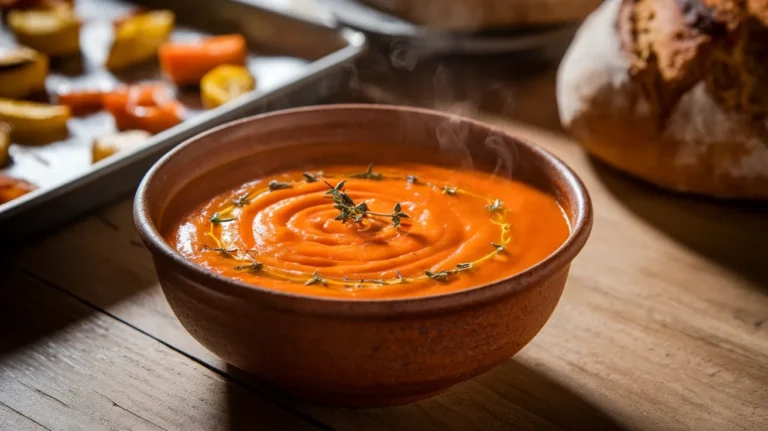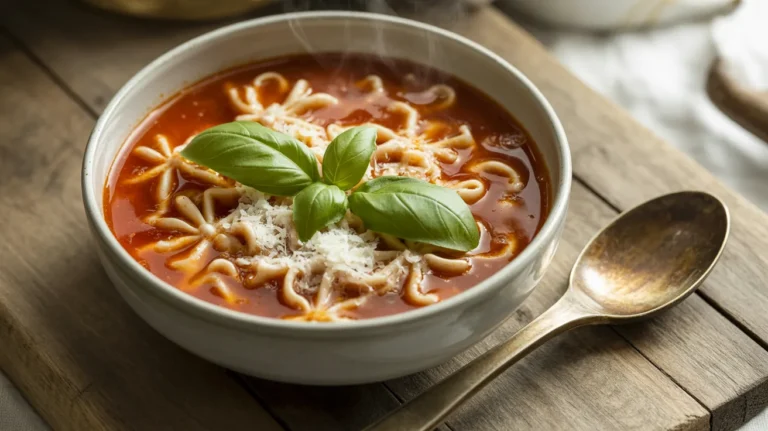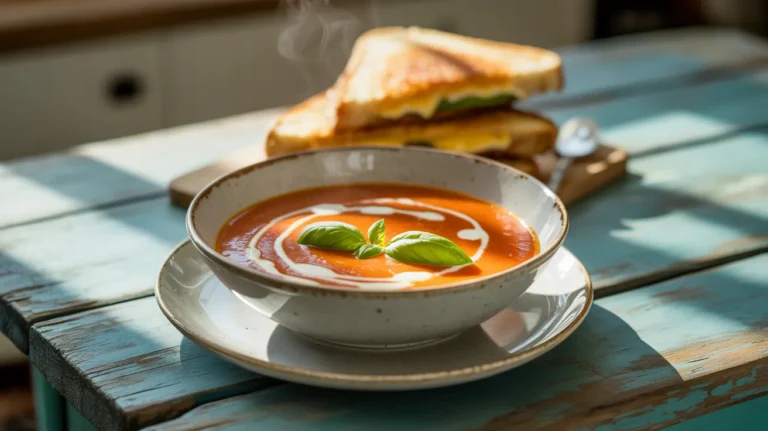This traditional old fashioned beef stew recipe creates the ultimate comfort food with tender, slow-cooked beef chunks nestled in a rich, savory broth alongside perfectly cooked vegetables. Our authentic old fashioned beef stew delivers generations of home-cooking wisdom in every spoonful, transforming simple ingredients into a soul-warming meal that brings families together around the dinner table.
SERVES: 4 | PREP: 20 MIN | COOK: 2 HOURS 15 MIN | TOTAL: 2 HOURS 35 MIN
Ingredients for Classic Old Fashioned Beef Stew
For the Beef:
| Ingredient | Amount |
|---|---|
| Chuck roast, cut into 2-inch chunks | 2 lbs |
| All-purpose flour | 1/3 cup |
| Salt | 1 tsp |
| Black pepper | 1/2 tsp |
| Vegetable oil | 3 tbsp |
For the Vegetables:
| Ingredient | Amount |
|---|---|
| Yellow onion, diced | 1 large |
| Carrots, cut into 1-inch pieces | 4 medium |
| Celery stalks, chopped | 3 stalks |
| Red potatoes, quartered | 1.5 lbs |
| Garlic cloves, minced | 4 cloves |
For the Broth:
| Ingredient | Amount |
|---|---|
| Beef broth | 4 cups |
| Red wine (optional) | 1/2 cup |
| Tomato paste | 2 tbsp |
| Worcestershire sauce | 1 tbsp |
| Fresh thyme | 2 tsp |
| Bay leaves | 2 leaves |
| Paprika | 1 tsp |
Detailed Step-by-Step Instructions for Old Fashioned Beef Stew
Phase 1: Preparing the Beef Foundation (15 minutes)
1. Dry the Beef Thoroughly Remove the chuck roast from packaging and place on a large cutting board. Using paper towels, pat each piece completely dry on all surfaces. This step is absolutely critical—any moisture on the meat will create steam instead of the golden-brown sear we need for flavor. Wet meat will not brown properly and will result in gray, unappetizing pieces that lack the deep, rich taste that makes old fashioned beef stew so special.
2. Cut Beef into Uniform Chunks Using a sharp chef’s knife, cut the chuck roast into 2-inch cubes. Try to make them as uniform as possible so they cook evenly. Look for the natural seams in the meat and cut along them when possible. Don’t worry if some pieces have a bit of fat—this adds flavor and moisture to your stew. Remove any large pieces of gristle, but small amounts of marbling are perfect for this recipe.
3. Create the Seasoned Flour Mixture In a large mixing bowl, combine 1/3 cup all-purpose flour, 1 teaspoon salt, and 1/2 teaspoon black pepper. Whisk these ingredients together until evenly distributed. This seasoned flour serves two important purposes: it helps create a beautiful crust on the meat and will naturally thicken your old fashioned beef stew as it cooks.
4. Coat Beef in Seasoned Flour Add the dried beef chunks to the bowl with the seasoned flour. Using your hands or a large spoon, toss the meat until every piece is evenly coated. The flour should stick to the meat—if it’s not adhering well, the beef wasn’t dried thoroughly enough. Once coated, gently shake off any excess flour to prevent it from burning in the pan.
Phase 2: Creating the Perfect Sear (15 minutes)
5. Heat Your Dutch Oven Properly Place a heavy-bottomed Dutch oven or large pot over medium-high heat. Add 3 tablespoons of vegetable oil and let it heat for 2-3 minutes until it shimmers but doesn’t smoke. To test if it’s ready, drop a small piece of flour into the oil—it should sizzle immediately. The right temperature is crucial for proper browning.
6. Brown Beef in Small Batches Working in batches (don’t overcrowd—this is where most beginners go wrong), carefully place beef chunks in the hot oil. You should hear an immediate sizzle. Leave at least 1 inch of space between each piece. Overcrowding will cause the temperature to drop and the meat will steam rather than brown. Plan on browning the meat in 2-3 batches for best results.
7. Achieve Perfect Browning Let each piece sear undisturbed for 3-4 minutes on the first side. Resist the urge to move or flip the meat—it will release naturally from the pan when properly browned. The bottom should be deep golden-brown, almost caramelized. Using tongs, turn each piece and brown on all sides, about 12-15 minutes total per batch.
8. Rest and Reserve the Browned Beef Transfer the beautifully browned beef to a large plate and set aside. Don’t worry if it’s not fully cooked through—it will finish cooking in the stew. Notice those dark, caramelized bits stuck to the bottom of your pot? Those are called “fond” and they’re pure flavor gold that will make your old fashioned beef stew incredibly rich and delicious.
Phase 3: Building the Aromatic Base (10 minutes)
9. Sauté the Onions Reduce heat to medium and add the diced onion to the same pot with the remaining oil and those flavorful browned bits. The onions will help release those stuck-on flavors from the bottom of the pan. Cook the onions, stirring occasionally, for 4-5 minutes until they become translucent and start to soften. They should not brown—if they’re browning too quickly, reduce the heat.
10. Add Garlic at the Right Moment Add the minced garlic to the softened onions and stir constantly for 30-45 seconds until fragrant. Garlic burns very quickly and turns bitter, so watch it carefully. You’ll smell the wonderful aroma when it’s ready—this is the foundation of flavor for your stew.
11. Incorporate Tomato Paste Add 2 tablespoons of tomato paste to the onion and garlic mixture. Stir constantly for 1-2 minutes, allowing the tomato paste to cook and darken slightly. This step, called “blooming,” intensifies the tomato flavor and adds a rich, deep color to your old fashioned beef stew.
Phase 4: Deglazing and Building the Stew Base (8 minutes)
12. Deglaze with Wine (If Using) If using red wine, pour it into the pot now and immediately start scraping the bottom with a wooden spoon. You’ll see those beautiful brown bits dissolving into the liquid—this process is called deglazing and it’s what gives restaurant-quality depth to home-cooked stews. Let the wine simmer for 2-3 minutes to cook off the alcohol. If not using wine, skip to the next step.
13. Add the Liquid Foundation Pour in 4 cups of beef broth, making sure to scrape up any remaining browned bits from the bottom of the pot. Add 1 tablespoon Worcestershire sauce, 2 teaspoons fresh thyme (or 1 teaspoon dried), 2 bay leaves, and 1 teaspoon paprika. Stir everything together until well combined.
14. Return the Beef to the Pot Carefully add the browned beef back to the pot along with any juices that have accumulated on the plate. These juices are packed with flavor and shouldn’t be wasted. The liquid should just barely cover the meat—if it doesn’t, add a bit more broth or water.
Phase 5: The Long, Slow Simmer (1 hour 30 minutes)
15. Bring to a Proper Simmer Increase heat to medium-high and bring the mixture to a gentle boil. You’ll see bubbles forming around the edges and occasional bubbles breaking the surface. Once it reaches this point, immediately reduce heat to low and cover the pot with a tight-fitting lid.
16. Maintain the Perfect Simmer Your old fashioned beef stew should maintain a very gentle simmer—you should see just a few lazy bubbles breaking the surface every few seconds. If it’s bubbling vigorously, reduce the heat further. Cook for 1 hour and 30 minutes, checking every 30 minutes to ensure the liquid level is maintained and the heat isn’t too high.
17. Test for Tenderness After 1.5 hours, test a piece of beef with a fork. It should be tender enough to break apart easily but not falling apart completely. If it’s still tough, continue cooking in 15-minute intervals until properly tender. Some cuts may need up to 2 hours total cooking time.
Phase 6: Adding Vegetables for Perfect Timing (30 minutes)
18. Prepare and Add Root Vegetables While the beef is finishing its cooking time, prepare your vegetables. Cut carrots into 1-inch diagonal pieces and celery into 1-inch chunks. Add these to the pot first because they take longer to cook than potatoes. Stir gently to incorporate without breaking up the tender beef.
19. Time the Potatoes Perfectly After the carrots and celery have simmered for 15 minutes, add the quartered red potatoes. The timing is important here—potatoes cook faster than carrots and celery, so adding them later ensures everything finishes cooking at the same time. Your old fashioned beef stew is almost ready!
20. Final Cooking and Seasoning Continue simmering for another 15 minutes until potatoes are fork-tender and carrots can be easily pierced. Remove and discard the bay leaves. Taste the broth and adjust seasoning with salt and pepper as needed. The stew should be rich, flavorful, and perfectly balanced.
Professional Chef’s Notes for Old Fashioned Beef Stew
Meat Selection Matters: Chuck roast is the gold standard for old fashioned beef stew because it has the perfect balance of meat and fat. The connective tissue breaks down during slow cooking, creating incredibly tender, flavorful pieces.
Temperature Control is Key: Low and slow cooking is essential. High heat will make the beef tough and stringy, no matter how long you cook it. Patience creates the perfect texture.
Wine Enhancement: Red wine adds complexity to your old fashioned beef stew, but it’s completely optional. If you don’t drink alcohol, substitute with additional beef broth plus a tablespoon of balsamic vinegar.
Natural Thickening: The flour coating on the beef will naturally thicken your stew. For a thicker consistency, mix 2 tablespoons cornstarch with cold water and stir in during the last 10 minutes.
Nutrition Information (Per Serving)
- Calories: 485
- Protein: 52g
- Carbohydrates: 28g
- Fat: 18g
- Fiber: 4g
- Sodium: 890mg
Creative Variations of Old Fashioned Beef Stew
Herb Garden Style: Add fresh rosemary and sage along with the thyme for an aromatic twist on this classic old fashioned beef stew recipe.
Mushroom Enhancement: Include 8 oz sliced cremini mushrooms with the onions for earthy depth and umami richness. This creates a more complex flavor profile similar to our Asian-inspired beef dishes.
Root Vegetable Medley: Replace half the potatoes with parsnips, turnips, or sweet potatoes for a more complex, slightly sweet flavor profile that still honors the traditional approach.
Guinness Irish Style: Replace the red wine with 1/2 cup Guinness stout for a rich, malty depth that transforms this American classic into an Irish-inspired feast.
Storage & Reheating Your Old Fashioned Beef Stew
Refrigerator Storage: Cool your old fashioned beef stew completely before storing in airtight containers for up to 4 days. The flavors actually improve and meld together overnight, making day-two stew even more delicious.
Freezer Storage: This stew freezes beautifully for up to 3 months. Consider freezing portions without potatoes if you plan to freeze, as potatoes can become grainy when frozen and thawed.
Proper Reheating: Warm gently over low heat, stirring occasionally and adding beef broth if needed to reach desired consistency. Never reheat on high heat as this can make the beef tough.
Make-Ahead Strategy: This old fashioned beef stew is perfect for meal prep. Make a double batch and freeze half for busy weeknights when you want homemade comfort food fast.

Troubleshooting Your Old Fashioned Beef Stew
Tough, Chewy Meat: If your beef is still tough after the recommended cooking time, continue simmering in 15-minute intervals. Some cuts need extra time to break down properly. Don’t increase heat—just extend the cooking time.
Watery, Thin Stew: Remove the lid during the last 30 minutes of cooking to allow excess liquid to evaporate. You can also create a slurry with cornstarch and cold water to thicken if needed.
Bland, Flat Flavor: Increase salt gradually and taste between additions. Add a splash of Worcestershire sauce or a beef bouillon cube dissolved in the stew for deeper umami flavor.
Mushy, Overcooked Vegetables: Next time, add vegetables in stages and reduce cooking time. Root vegetables should be tender but still hold their shape in properly made old fashioned beef stew.
Burning on Bottom: If ingredients stick to the pot bottom, immediately reduce heat and add more liquid. Gently scrape with a wooden spoon to prevent bitter, burnt flavors from developing.
Essential Equipment for Old Fashioned Beef Stew
- Heavy-bottomed Dutch oven (5-6 quart capacity) for even heat distribution
- Sharp chef’s knife for clean, uniform cuts
- Large cutting board with a groove to catch meat juices
- Wooden spoon for stirring without scratching your pot
- Measuring cups and spoons for accurate ingredients
- Tongs for safely turning meat while browning
- Large plate for holding browned meat
Organized Shopping List
Meat Counter:
- 2 lbs chuck roast (ask butcher to cut into stew meat if preferred)
Produce Section:
- 1 large yellow onion
- 4 medium carrots
- 3 celery stalks
- 1.5 lbs red potatoes
- 1 head fresh garlic
- Fresh thyme sprigs
Pantry/Dry Goods:
- All-purpose flour
- Vegetable oil
- Salt and black pepper
- Paprika
- Bay leaves
Canned/Bottled Section:
- 4 cups beef broth
- Small can tomato paste
- Worcestershire sauce
- Red wine (optional)
Five Success Secrets for Perfect Old Fashioned Beef Stew
1. Never Skip the Browning Process—This single step creates 80% of your stew’s final flavor. Take time to brown properly and your old fashioned beef stew will taste like it came from a professional kitchen.
2. Cut Everything Uniformly—Consistent 1-2 inch pieces ensure even cooking throughout. This attention to detail separates good home cooks from great ones.
3. Low and Slow Wins the Race—High heat will never create tender beef no matter how long you cook. Patience and low temperature are your best friends for authentic old fashioned beef stew.
4. Taste and Adjust Constantly—Every batch of stew needs different seasoning depending on your ingredients. Taste throughout cooking and adjust salt, pepper, and herbs as needed.
5. Let It Rest Before Serving—Allow your finished old fashioned beef stew to rest for 10 minutes before serving. This allows the stew to thicken naturally and the flavors to settle into perfect harmony.
This classic old fashioned beef stew pairs beautifully with crusty bread or buttermilk biscuits. For more hearty, soul-warming recipes that bring comfort to cold days, explore our collection of slow-simmered beef specialties that showcase international approaches to beloved comfort foods.




